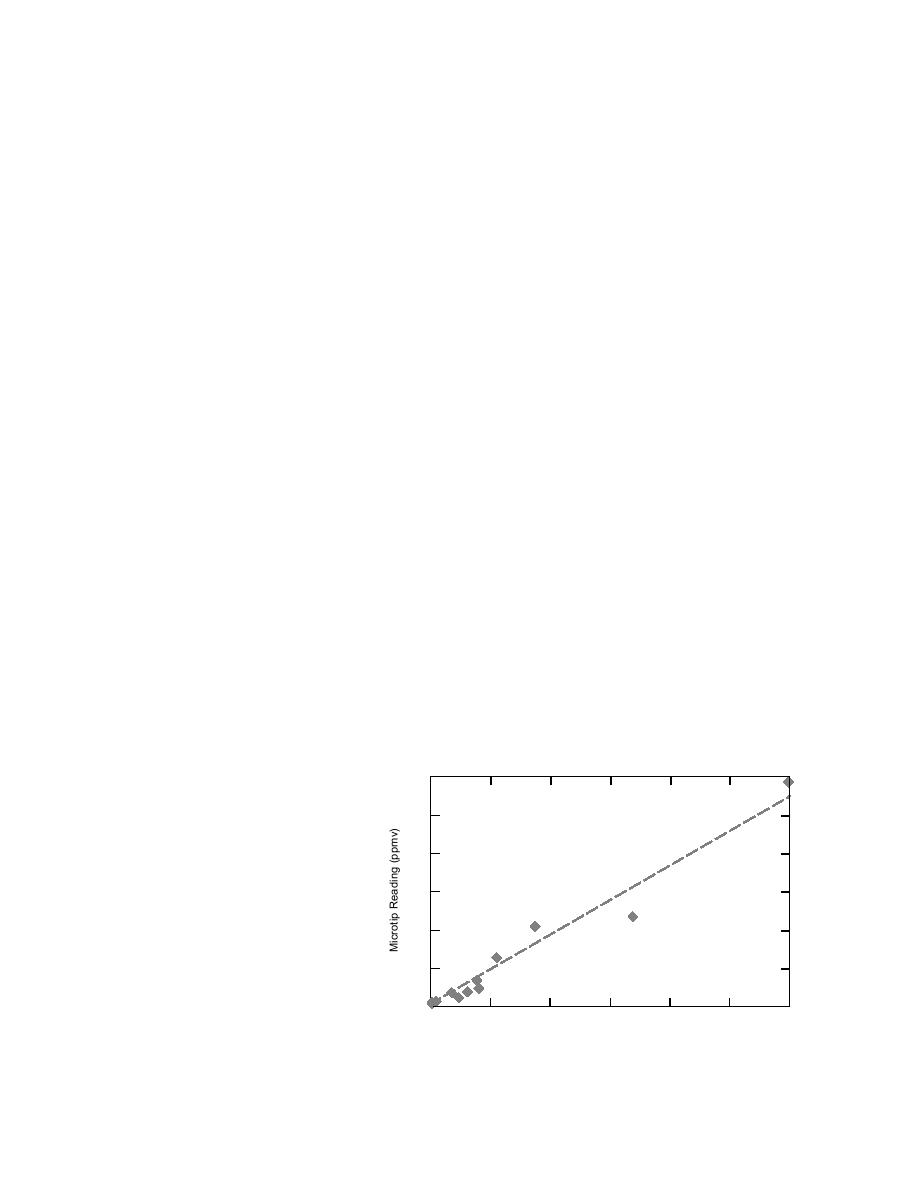
DISCUSSION
and removing a subsample after the bulk sample
reached the laboratory. The steps involved with
Collection of soil for VOC analysis should al-
filling, storing, and removing soil contaminated
ways be the first operation done after the surface
with VOCs all have been shown to be susceptible
to be sampled has been exposed to the atmo-
to volatilzation and in some cases biodegradation
sphere. Common sampling locations are soil ob-
losses (Hewitt et al. 1995). Losses of VOCs from
tained in core liners or split spoons, pit walls (nat-
soil samples with high levels of contamination
urally exposed soil horizons, e.g., river banks), or
can be limited, however, by transferring them di-
surface grid points. When a freshly exposed soil
rectly to vessels containing MeOH (Urban et al
surface is not rapidly sampled, analytes existing
1989, Hewitt 1994).
in a vapor phase diffuse away from this porous
To avoid placing samples with VOC levels less
matrix, thereby disturbing the temporal equilibri-
than 0.2 mg/kg in MeOH, this study has demon-
um that existed among the vapor, liquid, and
strated a simple method of preparing site-specific
sorbed phases. Following the depletion of the va-
working standards and field samples so that they
por phase, there are nearly instantaneous shifts in
can be rapidly analyzed on-site. Tables 1 and 2
the equilibria between the sorbed and aqueous
show that the performance of working standards
phases (Conant et al. 1996).
was reproducible and acceptably insensitive to
We observed an example of how quickly this
typical soil moisture and meteorological condi-
can happen by tracking VOC concentrations in a
tions. Trends in these initial findings, however,
soil subsample collected from the middle (1.2 cm
suggest that working standards should be pre-
below the surface) of a 3.6-cm-i.d. 5.1-cm-long
pared within 8 hours (or less) of their use, and
split spoon core liner. Grab samples taken from
that they should be stored in a cool location and
this subsurface location lost more than 90% of the
out of direct sunlight. Of perhaps greatest impor-
TCE when the core liner was left uncovered in a
tance is our finding that the relationship between
plastic bag for 40 minutes before sampling
total VOC soil vapor and collocated grab sample
(Hewitt and Lukash 1996). In general, as the sur-
analyses can be very significant. For instance, the
face area of exposure increases, the time before
linear relationship shown in Figure 2, which is for
there are significant losses decreases, even when
all measurements obtained during the first field
precautions are taken to limit native soil structure
trial, has a correlation coefficient (r) of 0.982. Over
disruption. Soil texture also has been shown to be
the concentration range shown in Figure 2, the
a factor. For instance, sandy soils would be ex-
response of the PID appears linear; however, at
pected to lose VOCs more rapidly than cohesive
higher concentrations, we anticipate that this
silts and clays (Hewitt et al. 1995). In essence, the
relationship would become nonlinear. Most like-
extent to which VOCs in a porous medium exist
ly this linear range would be expanded for higher
in a vapor state and the rapid shift to this phase
concentrations if hand-held flame ionization
upon disruption are the principal factors control-
detectors were used.
ling the success of a rapid analysis technique for
soil vapor.
600
In addition to exposure concerns,
soil samples must be transferred direct-
r2 = .965
500
ly to vessels with their hermetic seals
that either contain a solvent or permit
400
an analysis to be done without being
opened. Proposed Methods 5035 and
300
5021 both recommend the use of VOA
vials with Teflon faced silicone septa
200
for in-vial sample handling and analy-
sis when VOC concentrations are below
0.2 mg/kg. For concentrations above
100
0.2 mg/kg, however, neither method in
the initial draft provides guidance on
0
0
2
4
6
8
10
12
how to handle samples without incur-
HS/GC TCE Concentration (g/g)
ring large volatilization losses. Instead,
they defaulted to the past procedure of Figure 2. Relationship between rapid total VOC soil vapor analysis
filling a bottle with a bulk soil sample and grab samples for the first field trial.
7



 Previous Page
Previous Page
